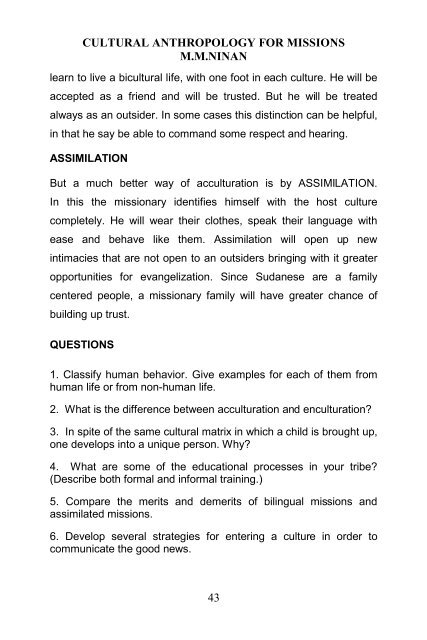Cultural Anthropology for Missions
Create successful ePaper yourself
Turn your PDF publications into a flip-book with our unique Google optimized e-Paper software.
CULTURAL ANTHROPOLOGY FOR MISSIONS<br />
M.M.NINAN<br />
learn to live a bicultural life, with one foot in each culture. He will be<br />
accepted as a friend and will be trusted. But he will be treated<br />
always as an outsider. In some cases this distinction can be helpful,<br />
in that he say be able to command some respect and hearing.<br />
ASSIMILATION<br />
But a much better way of acculturation is by ASSIMILATION.<br />
In this the missionary identifies himself with the host culture<br />
completely. He will wear their clothes, speak their language with<br />
ease and behave like them. Assimilation will open up new<br />
intimacies that are not open to an outsiders bringing with it greater<br />
opportunities <strong>for</strong> evangelization. Since Sudanese are a family<br />
centered people, a missionary family will have greater chance of<br />
building up trust.<br />
QUESTIONS<br />
1. Classify human behavior. Give examples <strong>for</strong> each of them from<br />
human life or from non-human life.<br />
2. What is the difference between acculturation and enculturation?<br />
3. In spite of the same cultural matrix in which a child is brought up,<br />
one develops into a unique person. Why?<br />
4. What are some of the educational processes in your tribe?<br />
(Describe both <strong>for</strong>mal and in<strong>for</strong>mal training.)<br />
5. Compare the merits and demerits of bilingual missions and<br />
assimilated missions.<br />
6. Develop several strategies <strong>for</strong> entering a culture in order to<br />
communicate the good news.<br />
43


















